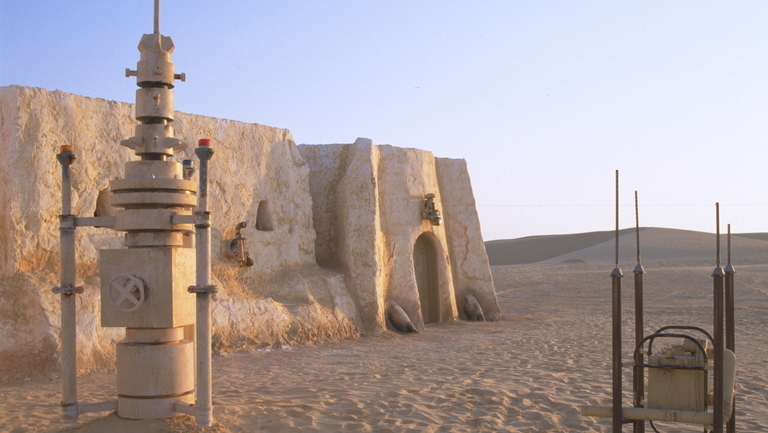Article 10: Power Pulls Drinking Water from Desert Air
Moisture Evaporator (left) from “Star Wars”
The second I read this article I became intrigued and thought how futuristic and sci-fi it sounded. In the article, it actually referenced Star Wars. The idea is to suck the humidity out of desert air and turn it into drinkable water. How it works it that you have a powder-filled box within another box and it’s left open in the night and when you close it in the morning, it helps heat and water vapor become trapped inside. The water condenses and trickles down the side. There are limitations though as this method only results in three ounces of water a day.
“The water goes in and the first ones go in and make the pores more polar and so more water comes in.” –Omar Yaghi, U.C. Berkeley chemist
Water is the most valuable commodity on Earth yet it is not treat at it’s true worth. Water scarcity is a huge issue and some places in the U.S., such as California, it’s already gotten so bad that they’re passing water restricting laws. As desperation and the eminent threat of lack of drinking water grows, I’m curious to see what kinds of solutions and innovative ideas begin to rise.
Source: GreenBiz
Author: Christopher Intagliata
https://www.scientificamerican.com/podcast/episode/powder-pulls-drinking-water-from-desert-air/



